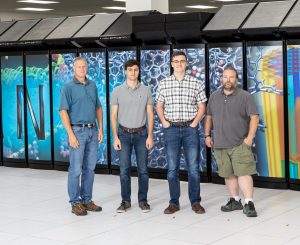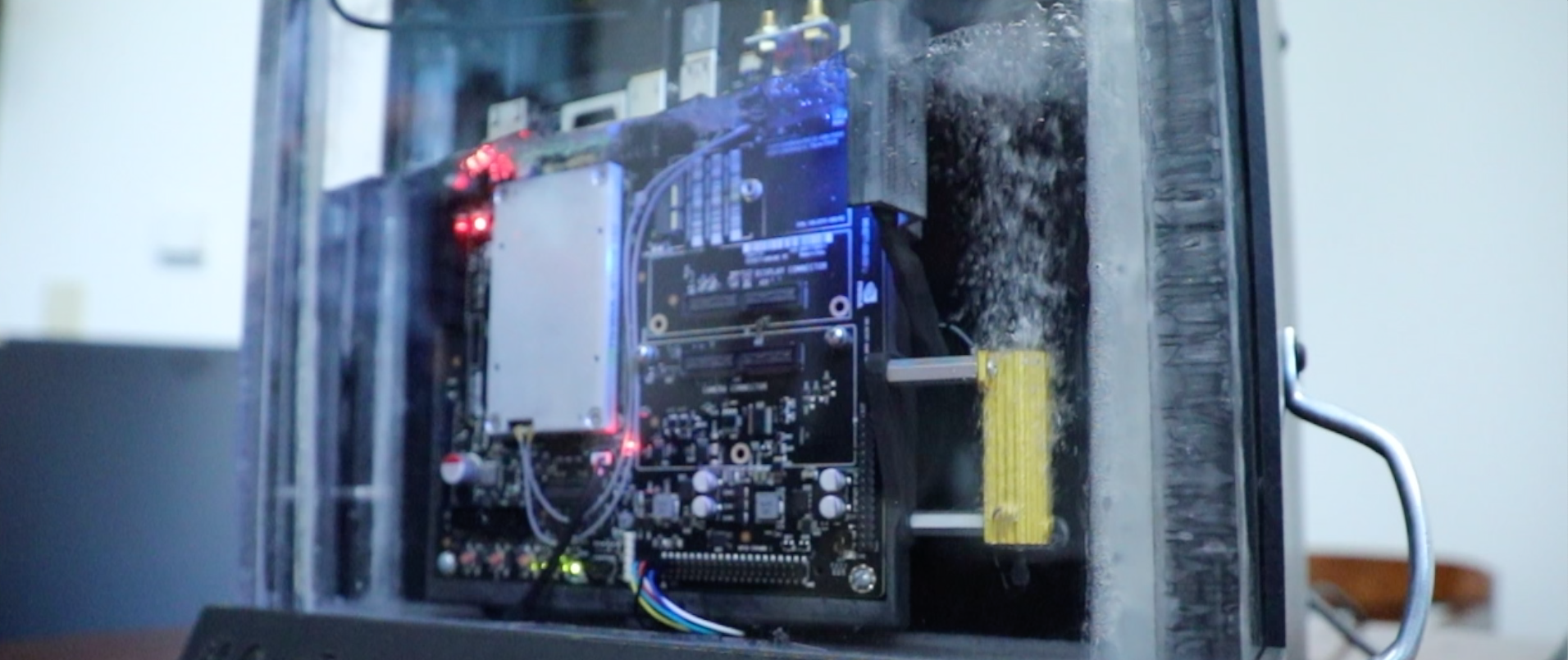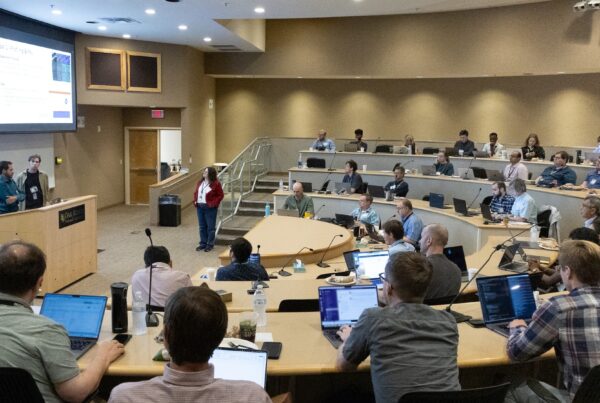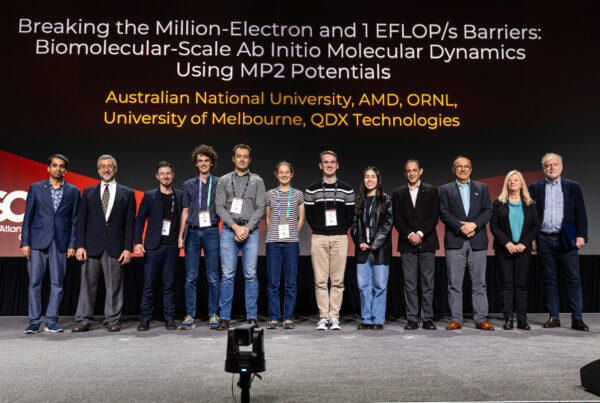Two high school students from Knoxville’s L&N STEM Academy spent their internships at the US Department of Energy’s (DOE’s) Oak Ridge National Laboratory (ORNL) developing Bubbles—a demonstration unit used to show the potential of ORNL’s supercomputers and the future of computer cooling techniques.
Logan O’Neal, a senior, and Tyler Duckworth, a junior, worked with Jim Rogers, director of computing and facilities at the Oak Ridge Leadership Computing Facility (OLCF), and OLCF Senior HPC Engineer Brian Smith to develop the unit.
The machine follows in the tradition of Simple Summit, developed in 2018 by interns Cade Brown and Thomas Hill, which used the generation of fractals to show the basic principles of parallel computing. O’Neal and Duckworth’s machine, however, allows for a more hands-on learning experience akin to the OLCF’s earlier demonstration tool, Tiny Titan, by incorporating two interactive simulations and a machine learning demonstration.
Using a video game controller and a drawing pad, visitors to the OLCF can engage directly with Bubbles to learn about the power of GPUs in machines like Summit, the OLCF’s IBM AC922 supercomputer, as well as the fundamentals of machine learning.

OLCF mentors Jim Rogers and Brian Smith (far left and far right) are shown with high school interns Logan O’Neal and Tyler Duckworth (center left and center right) from L&N STEM Academy. Image Credit: Carlos Jones, ORNL
In one application, an on-screen cursor billows simulated smoke that behaves in a realistic way, even casting a lifelike shadow. In another, users can navigate through a 3D collection of particles along X, Y, and Z axes that recreates the detailed movements and rippling effects of fluid in a container.
“The smoke is supposed to show the power of the GPUs and how even a single GPU can create something that looks realistic with a lot of fine details,” O’Neal said. “The particle simulation does the same thing, but on an even larger scale.”
The machine learning demonstration, which shows the way systems learn to recognize and apply data and patterns, lets users choose from 15 colors, each representing a texture such as grass, sky, or water. After a visitor draws an image, Bubbles maps the textures onto the selected colors to create a uniform, photorealistic image.
Not only does Bubbles help demonstrate the exciting possibilities of GPU computing, but it also uses cutting-edge cooling technology.
“We’re still using the same boards as the first iteration of Simple Summit,” Duckworth said. “The difference is we’re changing the cooling system from air cooling to immersion cooling, which means dipping an electronic circuit board in a non-electrically conductive fluid to cool off.”
Immersion cooling, although still in the early stages of large-scale application, could have a huge effect on the future of efficient cooling solutions.
“The great thing about immersion cooling is that it allows you to remove all the cooling solutions and be left with the raw circuit board,” Duckworth said. “You can pack things really tightly, and that saves a lot of space, which means you can make something really powerful with a really small footprint.”
Although it’s unlikely immersion cooling techniques will be used on massive supercomputers like Summit any time soon, Bubbles represents an exciting alternative to traditional cooling solutions.
“It’s a very experimental technology right now, but hopefully it could be something we see later on in the industry,” O’Neal said. “It’s a much more efficient solution than both water and air cooling.”
Emre Gurpinar, Jon Wilkins, and Starra Gribble of the ORNL Power Electronics and Electrical Machinery Group assisted O’Neal and Duckworth in creating the physical model of Bubbles.
UT-Battelle LLC manages Oak Ridge National Laboratory for DOE’s Office of Science, the single largest supporter of basic research in the physical sciences in the United States. DOE’s Office of Science is working to address some of the most pressing challenges of our time. For more information, visit https://energy.gov/science.






